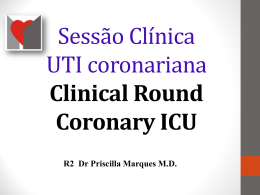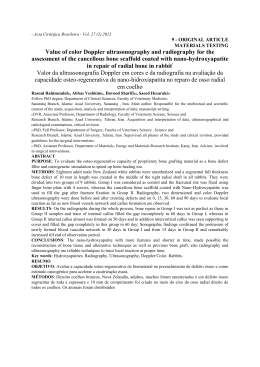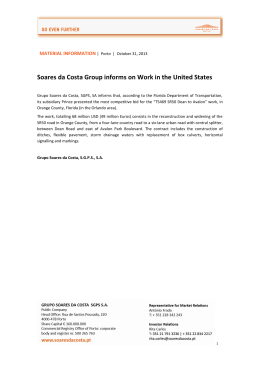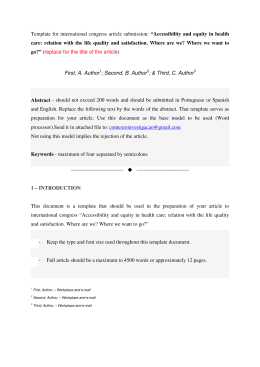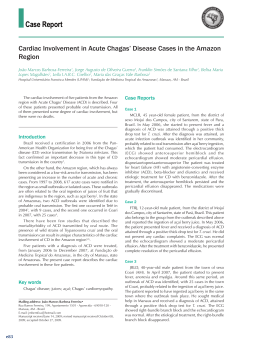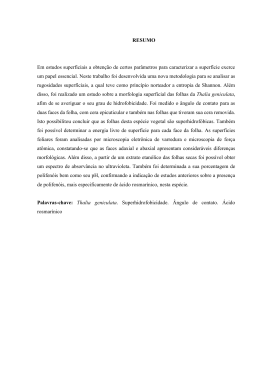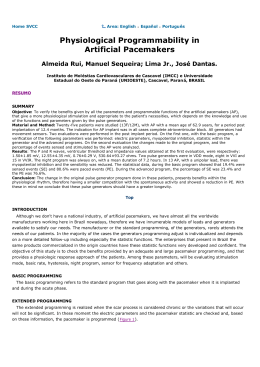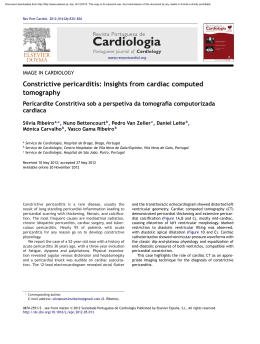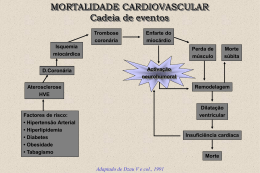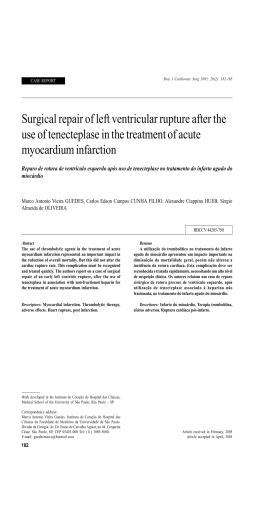Home SVCC Area: English - Español - Português Surgical Correction of Left Ventricular Aneurysms - Which Technique Should be Used? Sequeira de Almeida, Rui Manuel; Dantas Lima, José Instituto de Moléstias Cardiovasculares de Cascavel (IMCC) e Universidade Estadual do Oeste do Paraná (UNIOESTE) - Cascavel - Paraná - Brasil RESUMO SUMMARY Introduction : The improvement surgical technique, brings benefices to patients with anterior-apical left ventricular aneurysms (LVA). Objective: Present hospital and long-term results for the treatment of LVA, with linear and Dor's techniques. Material and Method: Between September 1992 and April 2001, 81 patients were submitted to surgical correction of their LVA. The linear technique (Group I) was used in 72 patients and the endoventriculoplasty with septal exclusion (Group II) in nine. The mean age, in Group I, was 58,9 ± 9,7 years, being 50 men. Associated procedures were CABG in 94.4%, thrombus toilet in 47.8% and endarterectomy in 5.6%. Mean by-pass and cross-clamping time were 83,9 ± 39,8 and 33,8 ± 13,4 minutes. In Group II, the mean age was 57,7 ± 9,8 years and there were six men. Four patients were in NYHA class III and five in IV. One patient was on a left ventricular assist device pre-operatively. The pre-operative catheterisation showed mean values of: left ventricle (LV) ejection fraction 32%, end systolic LV volume 108ml and end diastolic LV volume 185ml. Associated procedures were CABG in 77.8%, thrombus toilet in 55.5%, endarterectomy in 11.1% and VSD closure in 11.1%. Mean by-pass and cross-clamping time were 103,3 ± 24,8 and 41,7 ± 10,6 minutes. Results: The hospital mortality was 6.8%, in Group I, and left ventricular assistance, was used post-operatively in 4.2% patients. In Group II there was no mortality. The mean post-operative hospital stay was 8,8 ± 8,2, in Group I and 7,7 ± 0,9 days, in Group II. The follow-up, showed 4.6% late mortality in Group I being 47.6% of the patients, in NYHA class I, 39.7% in class II and 12.7% in class III. In Group II eight were in NYHA class I and one in class II. Discussion: As in the world literature, the results shown with techniques for remodelling the LV, improved patients' quality of life. Conclusion : The reconstruction of the left ventricular geometry seems to give better results at early and late follow-up. Top OBJECTIVE To present the surgical results, for the treatment of antero-septal-apical left ventricular aneurysms, with the linear and the Dor's Technique - Endoventriculoplasty with Septal Exclusion, performed at the Cardiovascular Surgical Unit, of the "Instituto de Moléstias Cardiovasculares de Cascavel", Cascavel, Paraná, Brazil. INTRODUCTION Left ventricle aneurysm, described in 1757 by John Hunter, is the most common mechanical complication, of acute myocardial infarction. The medical treatment of the symptomatic left ventricular aneurysms is associated with poor clinical and functional results and a medium term survival of only 12 -50%. To overcome these results, surgery has always been a better way to treat these patients. Various techniques have improved the surgical results: 1944 Beck Reinforcement with fascia lata 1955 Likoff & Bailey First Closed Resection 1958 Cooley First Open Resection 1973 Stoney Plicature 1977 Dagget Posterior Patch 1979 Levitsky Anterior Patch 1980 Hutchkins Cardiac Geometry 1984 Jatene Circular Reduction 1984 Dor Endoventriculoplasty with Septal Exclusion With the surgical treatment the long-term survival as increased to 75%, with a hospital mortality of 10%, with or without associated aortocoronary bypass surgery. Many authors have stretched the need for an additional complete myocardial revascularization, including bypassing the left anterior descending artery, whenever possible. PATIENTS AND METHODS Between September 1992 and May 2001, 83 patients were submitted to surgical correction of their symptomatic antero-septal-apical aneurysms, at the Cardiovascular Surgical Unit of the "Instituto de Moléstias Cardiovasculares de Cascavel". The linear technique (Group I) was used in 72 patients and the endoventriculoplasty with septal exclusion (Group II) in 11 patients. The mean age, in Group I, was 58,9 ± 9,7 years, being 50 men. Associated procedures were CABG in 94.4%, thrombus toilet in 47.8% and endarterectomy in 5.6%. In Group II, the mean age was 60.0 ±11.6 years (45 - 76 years) and there were eight (72,7%) men. All patients had had a myocardial infarction and the average time between the infarction and operation was 107 days (eight days to ten months). At the time of operation four patients (36.7%) were in NYHA functional class IV, six (54.5%) in class III and one (9.1%) in class I. The most predominant clinical indication for surgical treatment, as assessed by clinical history, was congestive heart failure, clinically incontrollable, in six cases (54.5%), followed by angina pectoris in four (36.7%) and arrhythmia in one (9.1%) patient. One patient was on a left ventricular assist device pre-operatively. The pre-operative catheterisation showed mean values of: left ventricle (LV) ejection fraction 37%, end systolic LV volume 118ml and end diastolic LV volume 179ml. ( Table I) The operations were performed on cardiopulmonary bypass with preservation by means of systemic hypothermia (30ºC), topical hypothermia with iced saline solution and cold crystalloid cardioplegia. Myocardial revascularization was performed in nine cases (81.8%), with a total of 22 by pass grafts (2.5 grafts/patient), being the left anterior descending coronary artery bypassed in seven (63.6%) patients. In seven cases the left internal thoracic artery was used. Associated procedures were CABG in 77.8%, thrombus toilet in 55.5%, endarterectomy in 11.1% and VSD closure in 11.1%. RESULTS The mean by-pass and cross-clamping time, in Group I, were 83,9 ± 39,8 and 33,8 ± 13,4 minutes respectively. The hospital mortality was 6.8%, in Group I, and left ventricular assistance, was used post-operatively in 4.2% patients. The mean post-operative hospital stay was 8,8 ± 8,2, in Group I. The mean by-pass and cross-clamping time were 103,3 ± 24,8 and 41,7 ± 10,6 minutes, respectively, in Group II, and there was no hospital mortality. The mean post-operative hospital stay was 7.8±1.1days, in Group II. The follow-up, showed 4.6% late mortality in Group I being 47.6% of the patients, in NYHA class I, 39.7% in class II and 12.7% in class III. In Group II there was an improvement of 33% in the left ventricle ejection fraction, 34% and 41% in left ventricle end- diastolic and systolic volumes. All patients are in NYHA class I, except one that is in class II. Figure 1 . DISCUSSION The surgical treatment of left ventricular aneurysms marked an improvement in left ventricular pump function. This fact can be related to a decrease in left ventricular end-diastolic volume, or to the myocardial revascularization. The first attempts to correct surgically the left ventricular aneurysms, in our Unit, were in all cases done by means of the linear technique. With the medium and long term results, of the cases with the worse ejection fraction and end left ventricular volumes, having a poor outcome, we changed for a technique that would preserve left ventricular geometry. Due to the end-diastolic volume reduction, there is a decrease in myocardial oxygen and a relief in the clinical symptom of angina. The concept, introduced by Jatene, of maintaining the left ventricular geometry, after aneurysm resection, improved the long-term follow up, of patients with big aneurisms. The Dor's technique, based on this concept, allied with a complete myocardial revascularization, using the internal thoracic artery to bypass the left anterior descending coronary, seems to be the ultimate surgery for these type of patients, specially with an ejection fraction lower than 40%. Our results showed, despite the small number of patients in Group II, that there is a great early improvement in aneurysms corrected with the Dor's technique. Despite a higher by-pass and cross-clamping time, not statistically significant, the early outcome of the Group II patients is better. Another characteristic of the Group II patients, is that the left ventricular volumes were greater and their ejection fraction lower, comparing with Group I, making the first a thicker type of patients. CONCLUSION The authors conclude that the surgical treatment of left ventricular antero-septal-apical aneurysms can be accomplished with low mortality and morbidity, even in patients with very low ejection fraction, by the endoventriculoplasty with septal exclusion technique, improving the ventricular function and medium term survival. Top Correção Cirúrgica dos Aneurismas Ventriculares Esquerdos - que Técnica Deve ser Usada? RESUMO Objetivo : Apresentar os resultados do tratamento cirúrgico dos AVE, pelas técnicas linear e de Dor. Material e Método: De setembro de 1992 a abril de 2001, 81 pacientes foram submetidos á corre ção cirúrgica de AVE, 72 pacientes pela técnica linear(Grupo I) e nove pela endoventriculoplastia com exclusão septal(Grupo II). A idade média, no Grupo I, foi de 58,9 ± 9,7, sendo 50 masculinos. Cirurgia de revascularização(CRM) foi realizada em 94,4%, retirada de trombos em 47,8% e endarterectomia em 5,6%. Os tempos médios de circulaçã o extracorpórea e de clampeamento aórtico foram de 83,9±39,8 e 33,8±13,4minutos. No Grupo II a idade média foi de 57,7 ± 9,8 anos, sendo seis pacientes masculinos. O estudo hemodinâmico pré-operatório, mostrou valores médios do ventrículo esquerdo (VE), de 32% para fração de ejeção, 108ml para volume sistólico final e 185ml para volume diastólico final. CRM, foi realizada em 77,8%, retirada de trombos em 55,5%, endarterectomia em 11,1% e fechamento de defeito do septo ventricular em 11,1%. Os tempos médios de circulaçã o extracorpórea e de clampeamento aórtico foram de 103,3±24,8 e 41,7±10,6minutos. Resultados: A mortalidade hospitalar, Grupo I, foi de 6,8% e 4,2% tiveram necessidade de assistência ventricular esquerda. No Grupo II n ão houve mortalidade. O tempo médio de permanência hospitalar foi de 8,8±8,2 dias, Grupo I, e 7,7±0,9, Grupo II. A longo prazo a mortalidade foi de 4,6%, Grupo I, sendo que 47,6% estão em classe funcional I, 39,7 % em classe II e 12,7% em classe III. No Grupo II oito pacientes estão em classe I e um em classe II. Discussão: Em concordância com a literatura mundial os resultados das técnicas de reconstru ção geom étrica do VE, têm melhorado a qualidade de vida dos pacientes. Conclusão: A reconstruçã o geométrica do VE, pela técnica de Dor, parece dar melhores resultados a curo e longo prazo. Top Your questions, contributions and commentaries will be answered by the authors in the Cardiovascular Surgery list. Please fill in the form (in Spanish, Portuguese or English) and press the "Send" button. Question, contribution or commentary: Name and Surname: Country: Argentina E-Mail address: @ Send Erase Top 2nd Virtual Congress of Cardiology Dr. Florencio Garófalo Dr. Raúl Bretal Dr. Armando Pacher Steering Committee President Scientific Committee President Technical Committee - CETIFAC President [email protected] [email protected] [email protected] [email protected] [email protected] [email protected] Copyright© 1999-2001 Argentine Federation of Cardiology All rights reserved This company contributed to the Congress:
Download
